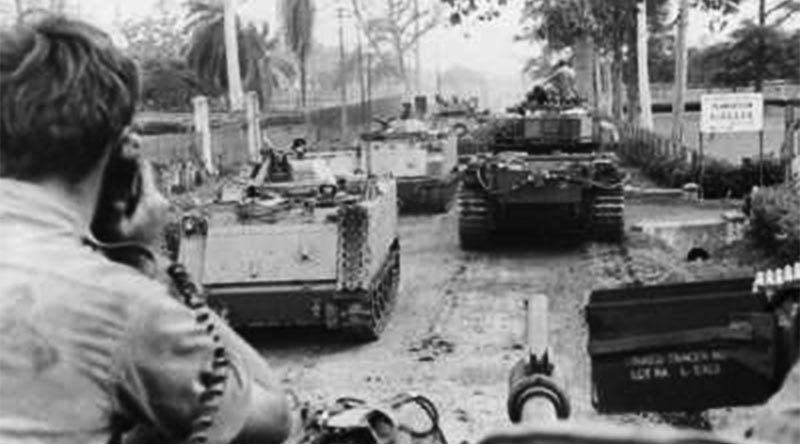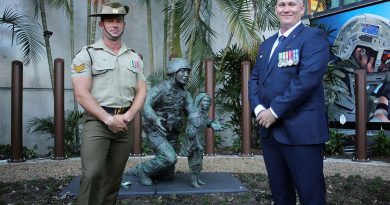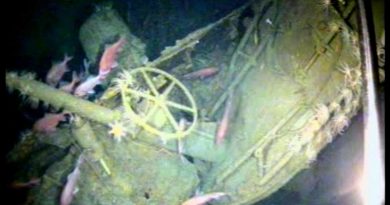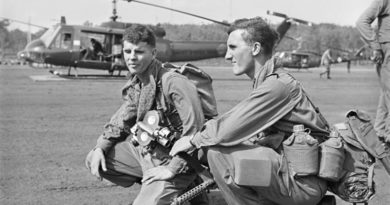Letter to 95-Year-Old Professor Who’s Seen it All Before
Share the post "Letter to 95-Year-Old Professor Who’s Seen it All Before"

Dear Professor Blainey,
Thank you for your article (in the Weekend Australian) ‘We were better prepared for war in 1914 than we are now’ and congratulations on both its relevance to contemporary affairs and its timeliness.
A number of us who served during the Vietnam War are staggered at how mistakes made then, are being repeated today (though I daresay it wouldn’t be a shock to you).
Initially, there was opposition on the part of both the US and Australia to the deployment of tanks (Westmoreland’s ‘no tanks in the jungle’ philosophy).
When the need became apparent, Australia decided to send only half a squadron, on the basis of ‘If we’re going to make a mistake, let’s only make half a one’.
The war ended with a full squadron providing intimate fire support for infantry, on all operations.
The importance of armoured vehicles in terms of Australia’s defence was well recognised in 1941.
The threat from Japan saw the Australian Armoured Corps (AAC) reorganised on the basis of three armoured divisions, plus a tank brigade (each division comprising three armoured regiments, three motor regiments and an armoured-car regiment – 12 tank regiments in all).
Mobile warfare was undoubtedly at the heart of the nation’s defence at this time.
Recently, the Defence Strategic Review specified that an armoured brigade was to be located in Townsville.
Usually, the key units would be a tank regiment, a cavalry (reconnaissance) regiment, and a mechanised infantry battalion.
Even though this is “probably the world’s most perilous time since the end of the Cold War in 1990”, Army decided that two armoured squadrons and a battlegroup HQ, could be scrapped from its order of battle.
The loss of these manoeuvre units significantly weakens 3 Brigade’s combat power.
Rather than 1st Armoured Regiment and 2nd Cavalry Regiment each commanding three squadrons as normal, 2 Cav Regt now commands two tank squadrons and two recon squadrons in Townsville.
Is it all to do with money?
Partly … the mothballing of approx 40 Armoured Fighting Vehicles (AFVs) is certainly a saving as far as running costs are concerned.
There was another priority involved as well, however.
The Chief of Army (CA) wanted a unit to manage new and emerging technologies – to this end, 1 Armd Regt was stripped of all its tanks, reduced by two thirds and made into a technology test bed in Adelaide.
While there might be a “boom in well-paid Australian generals”, those in the Royal Australian Armoured Corps (RAAC) couldn’t get the CA to change his mind.
The Army’s last tank fleet had been too small (59).
Paradoxically, the replacement fleet was increased to 75, but crews for 18 of these have been ‘let go’.
How can this be?
Lieutenant Colonel Bruce Cameron, MC, RAAC (Ret’d)
FILE PHOTO: Centurion tanks from 1st Armoured Regiment, and armoured personnel carriers from B Squadron, 3rd Cavalry Regiment, move along the main road of Binh Ba village. Over three days, armour and infantry dislodged a strong North Vietnamese Army group that had entered the village, for the loss of one Australian killed in action. AWM BEL/69/0389/VN. Binh Ba.
.
.

.
.
Share the post "Letter to 95-Year-Old Professor Who’s Seen it All Before"





